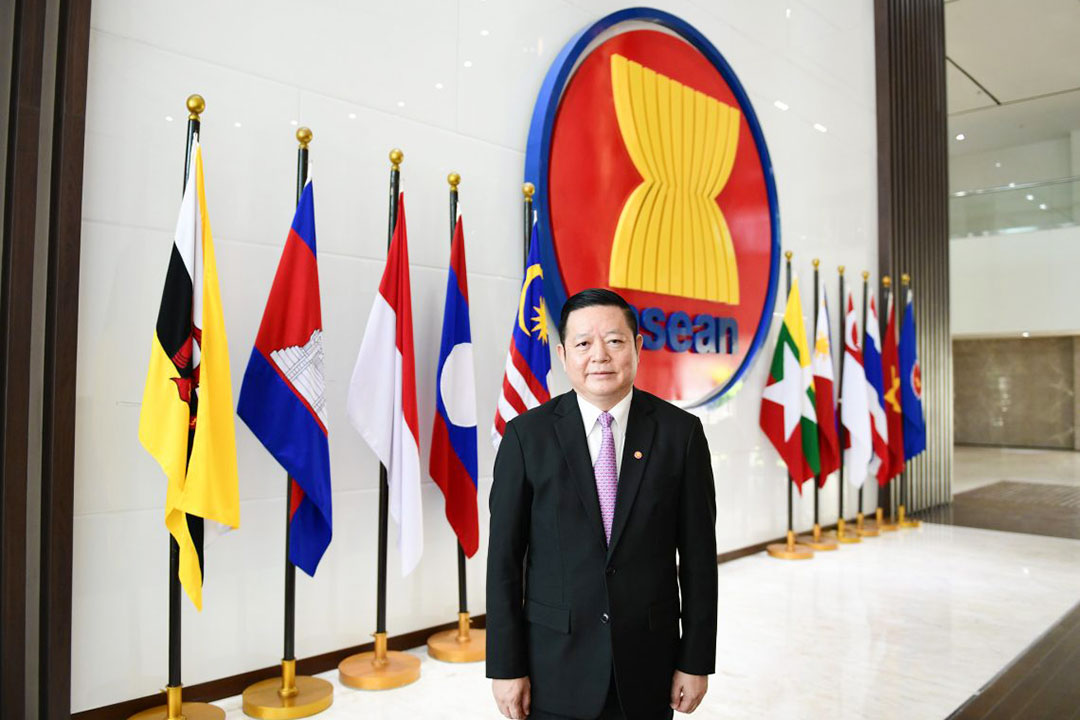Single market seen boosting ASEAN resilience vs supply chain disruptions

By Justine Irish D. Tabile, Reporter
THE Association of Southeast Asian Nations (ASEAN) needs to make further progress in creating a single market if it is to remain resilient in the face of disruptions to global supply chains, the bloc’s Secretary-General said.
Kao Kim Hourn, speaking at the 21st Management Association of the Philippines (MAP) International CEO Conference on Tuesday at Shangri-la The Fort, said economic downturns, political uncertainty, and a less predictable environmental concerns are combining to disrupt supply chains, in which Southeast Asia plays a key role.
“It is imperative that we expedite our concerted efforts to be more agile and more resilient and at the same time ensure sustainable and inclusive growth,” he said.
He added that ASEAN needs to focus on making the region a vibrant, thriving, single market and a hub of production serving global supply chains.
“Achieving this goal necessitates the enhancement of partnerships over the last year and beyond,” he said.
He added that such partnerships will allow member countries to form deep and important economic linkages from both in and outside of the region.
Upgrading trade agreements will keep them “future ready and responsive to emerging global and regional developments including those related to the digital, green and blue economies,” Mr. Kao said.
Thailand Management Association (TMA) Chair Nithi Patarachoke said that ASEAN should harness its strategic location to drive future growth.
“(It is) near major economies like China, South Korea, Japan and India. At the same time ASEAN is experiencing an expanding middle class population which means more demand for consumption,” Mr. Patarachoke said.
“ASEAN also enjoys extensive cross-border trade networks so, ASEAN is still viewed as a region of growth with high potential,” he added.
Singapore International Chamber of Commerce (SICC) Chair Bicky Bhangu “said that the environment we’re living in, the geopolitical tensions, the cost of doing business, inflation, (high) interest rates, supply chain disruptions, (are having) a significant impact on doing business.”
Because of this, Mr. Bhangu said there is an opportunity for ASEAN countries to act collectively.
“The main point here really is that across ASEAN is a huge value chain of opportunities from raw materials, markets, technologies, processes, and from bringing all of that ASEAN capability together gives a much stronger comparative advantage against the geopolitical tensions that were in today,” he said.
Philippine Chamber of Commerce and Industry President George T. Barcelon said that one of the key features of the Regional Comprehensive Economic Partnership, which he said is an extension of the ASEAN, is to address the low levels of intra-region trade and investment, relative to the high levels of economic integration achieved by Europe.
“This is something that concerns us in the Philippines because in our trade among the ASEAN countries, we are on the deficit side,” he added.
Mr. Barcelon also said ASEAN countries can be more economically complementary by removing tariff barriers, improving logistics, and harmonized infrastructure standards.
MAP President Benedicta Du-Baladad said opportunities abound for agile CEOs in the geopolitical shifts.
“Even as alliances are shifting, the bottom line will always be recovery and growth — and these two are shared goals across the globe,” Ms. Du-Baladad said.
“These can potentially usher in greater regional cooperation and fan the flames for innovative and out-of-the-box ideas so that we can all thrive in this post pandemic world,” she added.
The MAP, SICC and TMA signed a two-year memorandum of partnership and cooperation (MPC) at the event.
The MPC calls for the parties to form a technical working group to “study the possibility and feasibility of establishing an ASEAN Management Organization to expand the scope of the MPC and pursue other areas of cooperation.”
Ms. Du-Baladad said that forming a management association within ASEAN is “one way of fostering collaboration, cooperation and sharing of best practices in management.”



